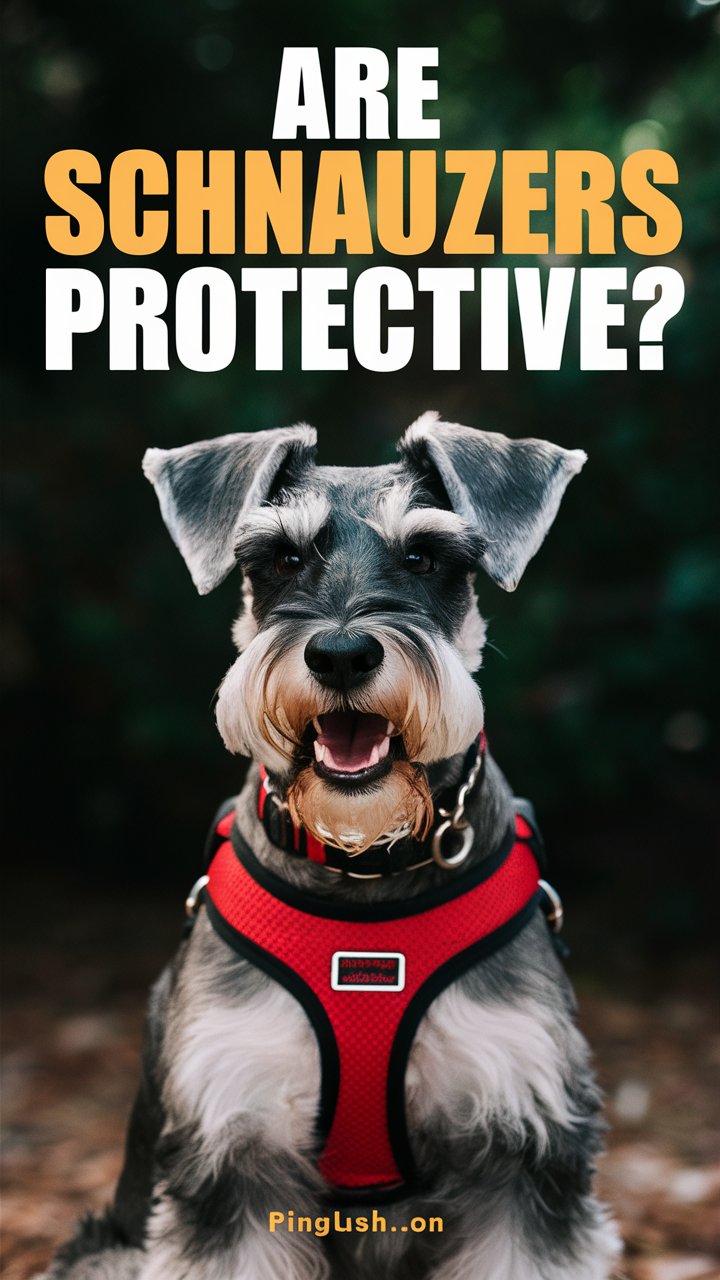If you’re considering welcoming a schnauzer into your family, one of the most common questions is: “Are schnauzers protective?”
The short answer: Yes — schnauzers are naturally protective dogs.
But here’s the twist: while their protective instinct is strong, proper socialization and training can transform them into loyal, loving companions without unhealthy overprotectiveness.
In this in-depth guide, you’ll learn:
✅ Why schnauzers are protective (with history & instincts)
✅ Hidden reasons that make them overly protective
✅ Weak points many owners overlook when training
✅ Advanced tips to balance protectiveness with calm behavior
✅ FAQs from real schnauzer owners
🐶 Why Schnauzers Are Naturally Protective
Schnauzers aren’t your average lap dogs. Historically bred in Germany during the 1800s, they were multi-taskers on farms:
- Guarding homes & families
- Herding cattle
- Protecting livestock from predators
- Hunting small pests
This “jack-of-all-trades” working background shaped them into alert, confident, and loyal protectors.
👉 Key Traits That Make Them Protective
- Strong bond with owners (family-first mentality)
- Highly intelligent (ranked 18th smartest out of 131 breeds)
- Keen watchdog instincts (barking to alert danger)
- Courageous personality despite medium size
🔎 6 Reasons Why Schnauzers Can Become Overly Protective
While protectiveness is natural, certain factors can push it to unhealthy levels:
- Instinct & Pack Drive – Strong ancestral guarding instincts.
- Traumatic Past – Rescue schnauzers may guard owners, food, or toys.
- Unknowingly Reinforced Behavior – Yelling at or laughing during barking actually rewards bad habits.
- Excessive Emotional Attachment – Borderline obsession or separation anxiety.
- Lack of Socialization – Seeing every stranger as a “threat.”
- No Rules or Structure – Without clear leadership, they feel responsible for protection.
⚠️ Weak Point in Many Articles: They stop at explaining “why” but don’t give advanced training solutions. Let’s fix that.
🐾 6 Expert Tips to Prevent Overprotective Behavior
Here’s how to channel your schnauzer’s natural instincts into balanced, healthy protection:
1. Practice Controlled Socialization
Expose them to different people, pets, and environments early (8–16 weeks old is best).
- Use calm introductions.
- Reward relaxed behavior with treats.
- Avoid overwhelming environments at first.
2. Use Desensitization & Counter-Conditioning (Advanced Technique)
If your schnauzer barks at strangers, pair the trigger (guest entering) with positive rewards (favorite toy, treat).
Over time, they’ll associate strangers with good things — not danger.
3. Establish Clear Leadership
Schnauzers thrive with structure.
- Set household rules (e.g., no barking at doors).
- Stay calm yet firm — shouting creates anxiety.
- Consistency is key: everyone in the family must follow the same rules.
4. Manage Separation Anxiety
Protectiveness often comes with clinginess.
- Practice short separations (leave for 5 mins, return calmly).
- Avoid dramatic greetings or goodbyes.
- Consider crate training as a “safe space.”
5. Redirect Protective Energy Into Training
Give them jobs to do: agility, obedience, trick training.
An engaged schnauzer is less likely to “invent” bad protective behavior.
6. Seek Professional Help When Needed
If aggression is severe, a certified dog behaviorist can customize a plan. This saves time and prevents worsening habits.
❌ Common Mistakes Owners Make
Many new schnauzer owners accidentally encourage overprotectiveness:
- Inconsistent Training – Training once, then forgetting.
- Physical or Verbal Punishment – Breaks trust instead of fixing behavior.
- Sheltering Puppy Too Much – Not exposing them to new experiences.
- Ignoring Early Signs – Growling and guarding escalate if not addressed.
📊 Schnauzer Protectiveness: Quick Facts
| Situation | Typical Schnauzer Response | Trainable? |
|---|---|---|
| Doorbell rings | Loud alert barking | ✅ Yes |
| Stranger enters | Protective stance | ✅ Yes |
| Kids playing rough | May intervene | ✅ With guidance |
| New dog encounter | Wary/defensive | ✅ With socialization |
🙋♀️ FAQs
Q: Will a schnauzer protect my kids?
Yes, but they must be trained not to confuse play with threats. Early exposure is crucial.
Q: Are males more protective than females?
Generally, males are more territorial, while females mature faster and train easier.
Q: Can schnauzers be guard dogs?
They make excellent watchdogs (alert barking), but for true guarding, breeds like German Shepherds are stronger options.
📝 Conclusion
So, are schnauzers protective?
Absolutely. But their protective instinct can be shaped into loyal companionship with socialization, structure, and positive training.
👉 If you want a dog that’s loyal, intelligent, and alert — without unhealthy aggression — a properly trained schnauzer is one of the best choices.
